第80章 REFERENCE WORK AMONG SCHOOL CHILDREN(1)
The importance of reference work with children is indicated in the next article by the fact that "the subjects on which children seek information are as varied as those brought by older people,and the material is equally elusive."Miss Abby L.Sargent contributed this article to the Library Journal for April,1895.
Abby Ladd Sargent received her training under her sister,Miss Mary E.Sargent.She reorganized the Wilmington Library Association Library in 1890-1891.From 1891to 1895she was librarian of the Middlesex Mechanics Association.In 1895she became reference librarian and classifier of the Medford Public Library,where her sister was librarian.In 1910,after her sister's death,she became librarian of the Medford Public Library.In 1900she organized and purchased books for the Owatonna,Minnesota,Public Library.She has been instructor in the Expansive Classification in Simmons College Library School since its opening.Miss Sargent was joint editor and compiler of Sargent's "Reading for the young,"and its supplement.
Let us suppose that the momentous problem is solved of persuading children to use the library for more serious purpose than to find a book "as good as 'Mark the match boy,'"and that we are trying to convince children that the library is infallible,and can furnish information on whatever they wish to know about--whether it is some boy who comes on the busiest morning of the week,to find out how to make a puppet show in time to give an afternoon exhibition,or some high-school girl who rushes over in the 20minutes'recess to write an exhaustive treatise on women's colleges.
It is unnecessary to say that the fewer books the library can supply the more must those few be forced to yield.A large library,with unlimited volumes,meets few of the difficulties which beset smaller and poorer institutions.
If the librarian can name at once "a poem about Henry of Navarre,"or tell who wrote "by the rude bridge that arched the flood,"and on what monument it is engraved,can furnish material for debate on "the Chinese question,""which city should have the new normal school,""who was Mother Goose,"or on any possible or impossible subject,she gains at once the confidence of the severest of critics,and is sure of their future patronage.
The subjects on which children seek information are as varied as those brought by older people and the material is equally elusive.Perhaps the hardest questions to answer are about the allusions which are found in literature studies,and which frequently the teacher who has given the question cannot answer.
I find it helpful whenever I come across material of this nature to make a reference to it in the catalog,and,in fact,to analyze carefully all juvenile books,not fiction,whose titles give no hint of the contents.A great many books otherwise valueless become thus most useful,especially if one is pressed for time.
Mr.Jones,in his "Special reading lists,"gives many such references to juvenile literature.Books like Ingersoll's "Country cousins,"which contains an article on shell money,also an account of Professor Agassiz's laboratory at Newport;Mary Bamford's "Talks by queer folks,"giving many of the superstitions prevalent about animals;the set of books by Uncle Lawrence,"Young folks'ideas,""Queries,"and "Whys and wherefores,"recently republished under the title "Science in story,"and others of this sort,if carefully indexed,answer many of the questions brought every day by children,and amply repay for the trouble.For even if juvenile books are classified on the shelves,much time is wasted in going through many indexes.